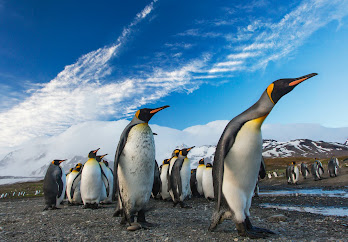A new Emperor penguin colony has been recently discovered from space. Satellite images of one of the most remote and inaccessible regions of Antarctica have made this discovery possible. This has raised the count of known Emperor penguin colonies living around the coastline of Antarctica to 66.
Meet the titans of the penguin world
An ongoing survey led by scientists of the British Antarctic Survey (BAS) for the past 15 years used satellite imagery to identify emperor penguin colonies by tracking the poo stains left on the ice at breeding sites.
The latest colony, which is home to nearly 500 birds, was found at Verleger Point in west Antarctica using photos from the Copernicus Sentinel-2 satellite mission of the European Commission. It was later confirmed with high-resolution photographs from the Maxar WorldView-3 satellite.
Dr Peter Fretwell (BAS), who led the research, called it an exciting discovery but also concerningly added that the colony was small and in a region severely affected by recent sea ice loss.
How is climate change affecting the Emperor penguins?
Climate change has caused the sea ice to rapidly melt, pushing these incredible ice birds towards an existential crisis. Penguins are especially vulnerable to climate change as they depend on the ice to last from April to September so that the chicks have time to develop and be more strong. According to Fretwell, if the ice breaks up before that, the chicks will fall into the water and either drown or freeze.
Their survival also directly depends on the population size in a colony, as these double-coated birds huddle together for warmth and protection against winter storms, especially during the two-month period when the male penguins incubate the eggs before they hatch.
As per Fretwell, the sea ice conditions are degrading with each passing year due to global warming. As a result, ninety per cent of the known colonies will be lost by the end of the century if nothing is done to cut down the greenhouse gas emissions.
Most emperor penguins will never see a human in their lifetime, but human actions on the other side of the world are slowly killing them. Curbing global warming is the only significant solution to save the world from losing these magnificent creatures.
To ‘science-up’ your feed, follow us on Instagram, Facebook or Twitter. Follow us on Medium!





2 comments
[…] scientists made a ground-breaking finding by detecting microplastics in recently fallen snow in Antarctica, highlighting the extensive reach of global plastic pollution. Microplastics originate from the […]
[…] to play in child-rearing. In this intricate analysis of six brilliant species—from seahorses to emperor penguins—we discover the mysterious aspects associated with parenting and how they break […]